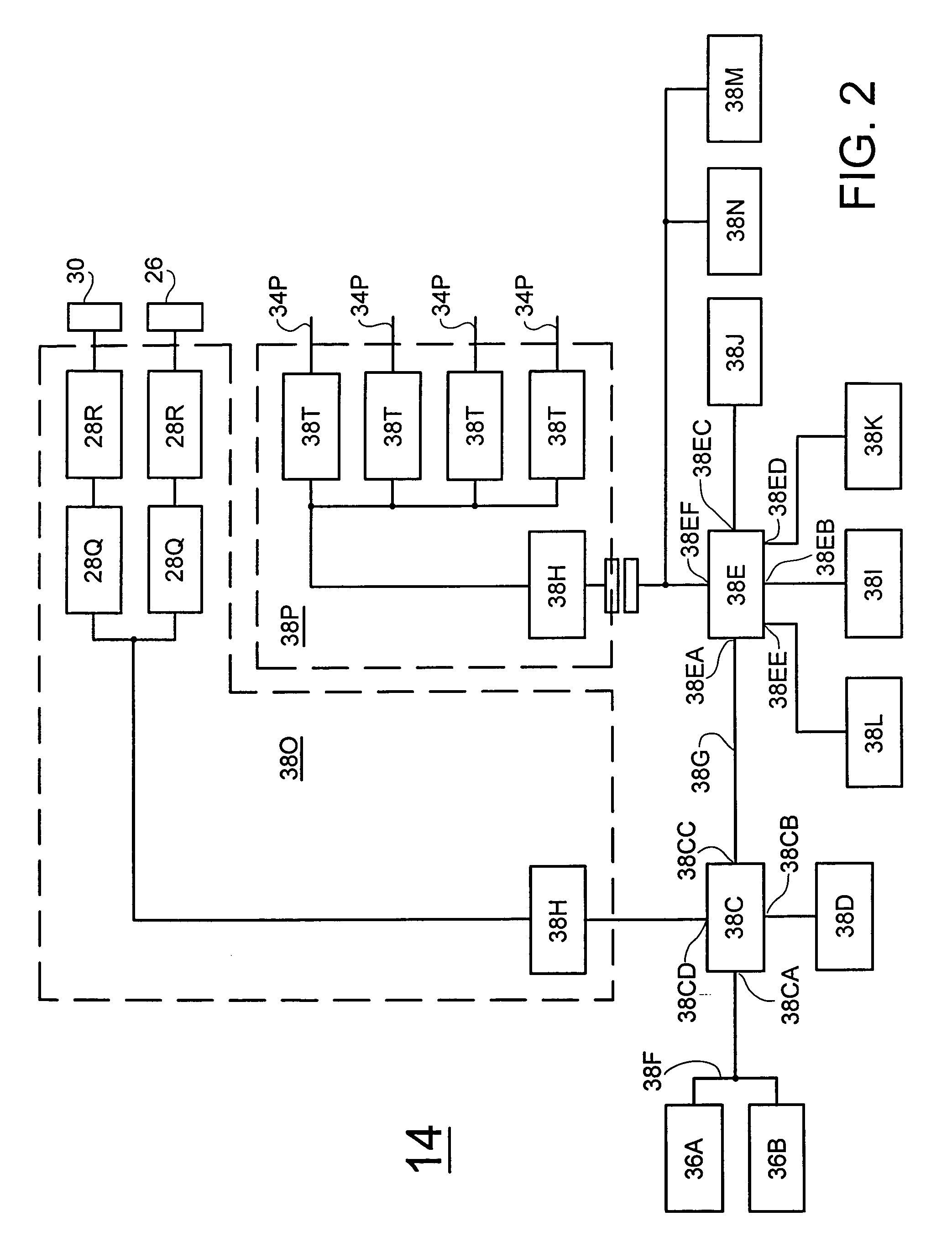A continuing problem in computer systems is in providing secure, fault tolerant resources, such as communications and data storage resources, such that communications between the computer system and clients or users of the computer system are maintained in the event of failure and such that data is not lost and can be recovered or reconstructed without loss in the event of a failure.
This problem is particularly severe in networked systems wherein a
shared resource, such as a system data storage facility, is typically comprised of one or more system resources, such as file servers, shared among a number of clients and accessed through the system network.
This problem is particularly severe in that the volume of data and communications and the number of data transactions supported by a
shared resource such as a file
server are significantly greater than within a single
client system, resulting in significantly increased complexity in the resource, in the data transactions and in the
client /
server communications.
This increased complexity results in increased
probability of failure and increased difficulty in recovering from failures.
In addition, the problem is multidimensional in that a failure may occur in any of a number of resource components or related functions, such as in a disk drive, in a control processor, or in the network communications.
These methods, however, are costly in system resources, requiring the duplication of essential communication paths and
processing paths, and the inclusion of complex administrative and synchronization mechanisms to manage the replacement of failed elements by functioning elements.
Also, and while these methods allow services and functions to be continued in the event of failures, and
RAID methods, for example, allow the
recovery or reconstruction of completed data transactions, that is, transactions that have been committed to
stable storage on disk, these methods do not support the reconstruction or
recovery of transactions lost due to failures during execution of the transactions.
Caching, transaction
logging and mirroring, however, are often unsatisfactory because they are often costly in system resources and require complex administrative and synchronization operations and mechanisms to manage the caching, transaction
logging and mirroring functions and subsequent transaction
recovery operations, and significantly increase the file server latency, that is, the time required to complete a file transaction.
It must also be noted that caching and transaction
logging are vulnerable to failures in the processors in which the caching and logging mechanisms reside and that while mirroring is a solution to the problem of loss of the cache or
transaction log contents, mirroring otherwise suffers from the same disadvantages as caching or transaction logging.
These problems are compounded in that caching and, in particular, transaction logging and mirroring, require the storing of significant volumes of information while transaction logging and the re-construction or re-execution of logged file transactions requires the implementation and execution of complex algorithms to analyze, replay and roll back the
transaction log to re-construct the file transactions.
These problems are compounded still further in that these methods are typically implemented at the lower levels of file server functionality, where each data transaction is executed as a large number of detailed, complex
file system operations.
As a consequence, the volume of information to be extracted and stored and the number and complexity of operations required to extract and store the data or data transactions and to recover and reconstruct the data or data transactions operations is significantly increased.
Again, these methods are costly in system resources and require complex administrative and synchronization mechanisms to manage the methods and, because of the cost in system resources, the degree of redundancy that can be provided by these methods is limited, so that the systems often cannot deal with multiple sources of failure.
For example, a system may provide duplicate parallel processor units or communications paths for certain functions, but the occurrence of failures in both processor units or communications paths will result in total loss of the system.
For this reason, the methods generally do not operate cooperatively or in combination, may operate in conflict with one another, and cannot deal with multiple failures or combinations of failures or failures requiring a combination of methods to overcome.
Some systems of the prior art attempt to solve this problem, but this typically requires the use of a central, master coordination mechanism or sub-system and related complex administrative and synchronization mechanisms to achieve cooperative operation and to avoid conflict between the
fault handling mechanisms, which is again costly in system resources and is in itself a source of failures.
 Login to View More
Login to View More  Login to View More
Login to View More 


